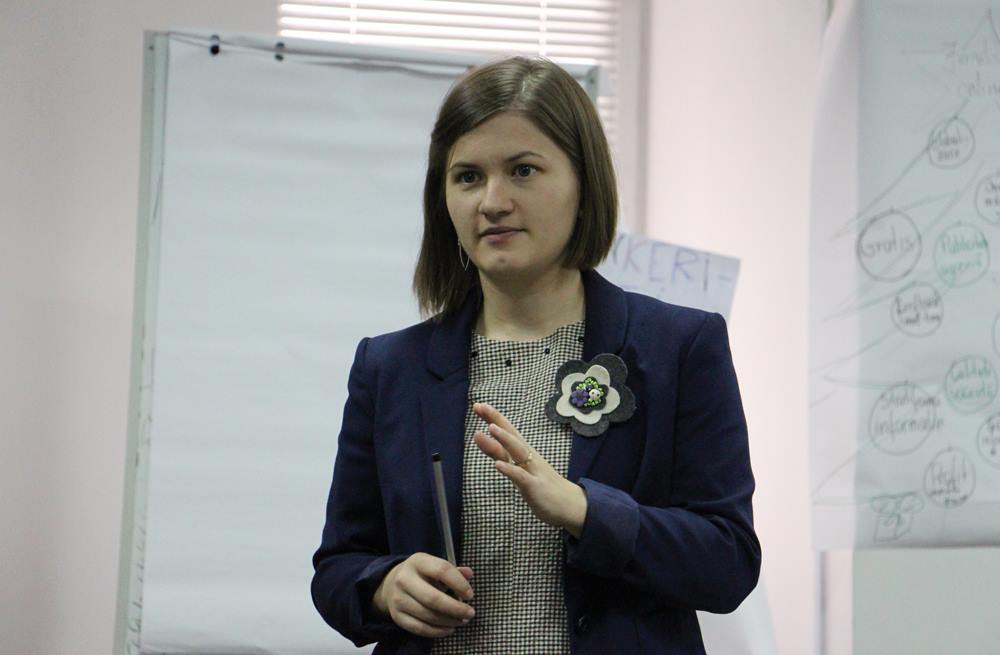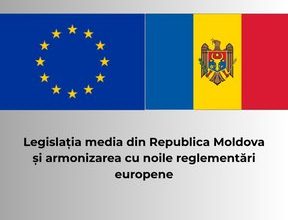Burnout among journalists, an issue with impact for the whole society

Tatiana Ețco
freelance journalist, communicator
For the first time, although I would say finally, the latest Index of the State of the Press study for 2022 included the burnout syndrome among the causes that affect the quality of journalism in Moldova.
But what is actually burnout? How often does it occur and what are the peculiarities of this syndrome in journalists? These questions, among other things, led me to start, two years ago, my adventure in the field of clinical psychology, which ended with research on this topic, with a master’s degree and, in some aspects, with more questions than at the beginning of this path.
In April this year, more than 100 journalists from Moldova accepted the invitation to be part of this research, and I thank them for their sincerity and trust. In fact, through this text I am trying to express my gratitude and share the results obtained and the conclusions formulated in the research, because I firmly believe that information is one of the most powerful and precious tools.
Burnout is a term used metaphorically to describe a complex and complicated phenomenon, and it comes from the verb “to burn out”, i.e. to burn until fuel is exhausted. In specialized scientific literature a variety of terms is used in relation to this concept. I decided to use the generic term in English, which is, in fact, the current trend in social sciences – using generic terms to ensure conceptual homogenization.
Some background
The burnout syndrome has been in the attention of the academic community and society at large for almost half a century. Despite hundreds of studies, this concept remains vague and unclear. There is no clear definition or consensus on its diagnosis and etiology.
However, in some European countries there are laws and regulations that oblige employers to periodically assess psychosocial risks among employees and apply policies to prevent burnout and stress at work. Moreover, in countries such as Belgium and the Netherlands, burnout is recognized as an occupational disease or work-related disorder. An analysis of the 2015 European survey on working conditions suggests that on average 11% of employees in European countries and 17% of employees in non-EU countries are affected by burnout. The highest levels of burnout are reported in East and Southeast Europe, where Moldova is located, too. International post-COVID-19 studies show similar results: an overall risk of burnout of 11%.
In recent years, especially in the new post-pandemic context, in the vicinity of a war and in the instability characteristic of a society in permanent transition, Moldovan journalists are exposed to multiple challenges that can contribute to the development of burnout symptoms. Research on this issue, however, is at an early stage, with recently more attention being paid to it.
What is the burnout syndrome?
Some authors argue that burnout is the “silent pandemic” that hit humanity. There is no consensus on the definition. Between 1974 and 2018, 88 unique definitions were formulated, of which 13 were original, and in 12 of them exhaustion is the key element of burnout.
In this research I used the definition formulated by W. Schaufeli et al. (2019), according to which burnout is a state of work-related exhaustion that occurs among employees and is characterized by:
- exhaustion (extreme fatigue is the most obvious symptom identified in all existing definitions, referring to chronic physical and mental fatigue and severe energy depletion; it is considered a necessary but not sufficient condition for burnout);
- decreased ability to regulate cognitive processes (memory and/or attention);
- decreased ability to regulate emotional processes (exaggerated emotional reactions, feeling angry or sad without knowing why, difficulty controlling emotions at work, frustration, irritability);
- mental distancing (cynical attitude, autopilot operation, low interest and enthusiasm, strong aversion to work, indifference to work, avoidance of interactions with other people related to work).
These 4 basic dimensions of burnout are accompanied by:
- depressed mood (feelings of insignificance, uselessness and guilt, inability to experience pleasure, feeling trapped);
- psychological symptoms (sleep problems, worry, feeling tense or anxious, increased sensitivity to noises and crowds);
- nonspecific psychosomatic manifestations (physical symptoms that are presumed to be caused or exacerbated by psychological factors such as palpitations, chest pain, stomach and bowel problems, headache, muscle pain, frequent illness).
The cause is allegedly imbalance between high demands at work and insufficient labor resources. In addition, problems outside of work, personal issues and/or vulnerability can facilitate the development of burnout.
Therefore, burnout is the result of a complex combination of individual, organizational and interpersonal factors, and understanding and managing it requires a comprehensive approach that takes into account both individual characteristics and the organizational environment in which the person works.
Burnout is a consequence of exposure to certain working conditions rather than an individual characteristic. Organizational factors, such as workload or emotional demands, are the key triggers of burnout, but individual factors, such as personality traits and coping strategies, can moderate the impact of these organizational factors. Certain individual characteristics can enhance or mitigate the negative effects of organizational factors on burnout and its consequences.
Burnout should not be viewed as a process that is generated by stress, but as an independent process, which develops over time and has specific causes. Stress can intensify and generate burnout, but it is not the main cause of it.
How is burnout manifested in Moldovan journalists?
The results obtained after applying the BAT scale for burnout show that in 14% of journalists burnout is very likely, with many symptoms characteristic of severe burnout, and in 24% of subjects there is a significant risk of burnout, with symptoms characteristic of burnout that can be problematic.
Among burnout parameters, journalists scored the most in the subscale Exhaustion, then in the subscale Impaired emotional control. Per subscale, most journalists scored low at Mental distancing and at Impaired cognitive control.
Gender differences
On average, women journalists experience burnout symptoms more strongly and perceive stress more sharply, but significant gender differences are observed only in the case of exhaustion. There could be several explanations, but I believe it is important to mention, in this context, the gender differences in social roles and the type of topics on which women journalists work. For example, the constant pressure to deliver quality information against the clock and at the same time to do multitasking, which is just one of the stressors in a newsroom, can be greater for women, as they are often responsible for more social roles, such as caring for children and/or elderly parents, housekeeping, which can lead to higher levels of exhaustion and stress. Women journalists are also likely to cover more sensitive topics and themes.
There are practically no differences between men and women only in the low level at subscale Mental distancing.
The analyzed data show that there are no significant differences in the manifestation of burnout in journalists depending on age, the type of media in which they work, the number of jobs they work simultaneously, whether they work mainly in the office or in the field, or remuneration.
Work experience
We found a significant difference depending on work experience only in the Exhaustion subscale. We see significant differences between journalists with a work experience of over 25 years, those with a work experience of 5-10 years and those with a work experience of 11-25 years.
Journalists with a work experience of 5 to 25 years seem to have a higher level of exhaustion compared to those with a shorter work experience. One explanation could be that the stress and pressure associated with working as a journalist build up over time and can lead to physical and mental exhaustion, especially in those with more work experience. In addition, this category of journalists could have not only more experience in the field, but also more pressure and responsibility, which can also lead to exhaustion.
However, there are no significant differences in the manifestation of burnout among journalists with a work experience of less than 5 years and those with a work experience of more than 25 years. Journalists with less work experience may be more energetic, motivated and enthusiastic, and this may protect them from exhaustion. And journalists with the most experience may have developed personal resources of adaptation and resilience during their careers, which allow them to cope with occupational stress in a more effective way. They can also be better adapted to their work environment, have a higher level of satisfaction and a better understanding of expectations. In addition, journalists with greater work experience may have developed a wider social support network, which provides them with additional emotional support and resources to deal with occupational stress.
Also, the higher the level of stress journalists perceive, the more likely they are to experience psychological symptoms such as exhaustion, impaired emotional and cognitive control, mental distancing and secondary symptoms, that is, to develop burnout syndrome.
These results are confirmed by previous studies that claim that journalists face a number of stressors specific to their profession, such as tight deadlines, traumatic or violent events, pressure to deliver high-quality content and endure public criticism. These working conditions can contribute to high levels of stress and ultimately burnout.
Representative figures
Analyzing items from the two tests applied to the 100 journalists included in the research and highlighting those who accumulated the highest percentage, we notice that:
- 93% of journalists believe that everything they do at work always or often requires a lot of effort;
- 85% of journalists surveyed feel carefree rarely or almost never;
- 80% feel pressed for time often or almost always;
- 79% have enough time for themselves rarely or almost never;
- 78% think they have too many things to do almost always or often;
- 72% feel rested rarely or almost never;
- 68% have too many decisions to make almost always or often.
Although to a lesser extent, the following might compensate for the situation:
- 93% of journalists are in conflict situations almost never or rarely;
- 85% do things they really like almost always or often;
- 78% feel isolated and alone rarely or almost never.
Given the complexity of clinical manifestations, interventions based on a multidimensional perspective are needed to treat and diminish burnout syndrome, which is a long-lasting process, where prevention is much more effective.
In the field of research, but also in the field of professional journalism, discussions about burnout in journalists and their mental health in general are insufficient and sporadic. It is necessary to inform and raise awareness among journalists and their media outlets about the importance of starting discussion in the professional community about the impact and risk of burnout and about the importance of recognizing the symptoms and providing the necessary psychological support to journalists who show the first signs of burnout or who are in a chronic or recovery process.
Burnout in journalists is a problem not only for employers, as previous research has found that this syndrome affects performance and relationships at work, but it can also be a problem for society, since the work of journalists guides and shapes attitudes and perspectives for the citizens they inform.
This analysis is made possible by the generous support of the American and British people through the United States Agency for International Development (USAID) and UK. The contents are the responsibility of IJC and do not necessarily reflect the views of UK, USAID or the United States Government.




